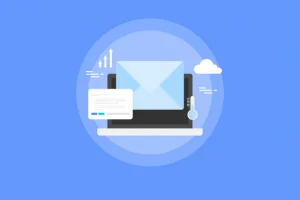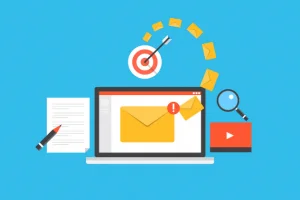Cold Email Campaigns vs Email Marketing Campaigns
Cold email campaigns and email marketing campaigns are terms that are often used interchangeably. They are nowhere near the same though. Cold emails and marketing emails differ a lot. Ensure that you are doing the best cold prospecting possible by learning the differences between cold emailing and marketing emails as well as ways to optimize your cold email address list. This can lead more success as an email marketing specialist.

Cold Email vs Marketing Email Recipients
When sending out cold emails your recipients have no relationship with you. They are not subscribers and may not even be aware of your company. These arine people you have carefully chosen to receive a message from your business.
The goal of a cold email is to surprise your audience in a positive way. The email address list will not expect an email from you, which is why your email will surprise them. As an email marketing specialist, you must create a meaningful first impression with your recipients when sending out cold email campaigns.
Recipients of your email marketing campaigns are, in contrast, subscribers. They know about your company and the products or services it offers. They have intentionally chosen to receive email correspondence from your company by subscribing to your email list.
Email subscribers expect that your company will send them automated marketing emails at various intervals. They are aware that your emails are being sent to thousands of other subscribers. Email subscribers are ok with this, but also want the ability to unsubscribe at any given time.
Cold Email vs Marketing Email Purpose
Cold emails are usually meant to start conversations. They are used in B2B marketing to create business relations or business deals. The intention behind a cold email is to get a response from your recipient. This will start a conversation between you and your recipient.
The goal of marketing emails is to lead recipients to another piece of content. This could be anything from a product page, blog post, PDF or webpage. Marketing emails are meant to inform subscribers and provide value in their inboxes. This helps increase brand awareness and drive sales conversions.
Cold Email vs Marketing Email Statistics
The type of response you will receive from a cold email and a marketing email varies drastically. For cold emails, you can expect open rates to be anywhere from 10-15%. Click through rates will be between 0.5-2%. Marketing emails, in contrast, will have open rates closer to 20% or higher. Their click through rates will be around 3-5% as well. Since cold emails involve prospecting to new clients, this leads to more distrust among recipients, leading to the lower statistics compared to marketing emails.
Tips for Effective Cold Email Marketing
Cold emails involve sending emails to people you or your business have met or interacted with. This is completely different than traditional email marketing, where your audience is aware of your company. Cold email recipients are completely new potential customers, and you need to build a relationship with them.
The key to cold email marketing success is to create a positive first impression with your recipients. Creating a good first impression can be the difference between success and failure. This has a direct effect on the stats you receive from your campaigns and can lead to better results.
Here are some techniques to try in your next cold email campaign:
- Include the recipients name in the subject line
- A/B test your subject line
- Create segmented audiences to send personalized emails to
All these techniques can help increase open rates and click through rates of your cold emails. The personalization will cause recipients to connect with your campaigns and generate better results.
Conclusion
Email marketing can be straight forward, if you spend time crafting a well thought out and targeted email campaign, it should be received well by your audience. The more effort you put into your campaigns, the more likely they will receive high open and click through rates.
Good email marketing relies on understanding your audience and using what you know about them to drive the success of your email address list campaigns. It also involves an understanding about the type of campaign you are sending out. Understanding these details can make the world of difference in all your email campaigns and the expectations you may have on results.




